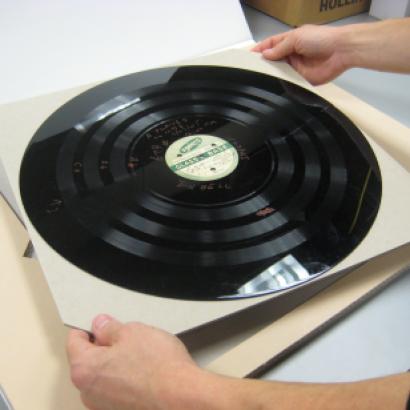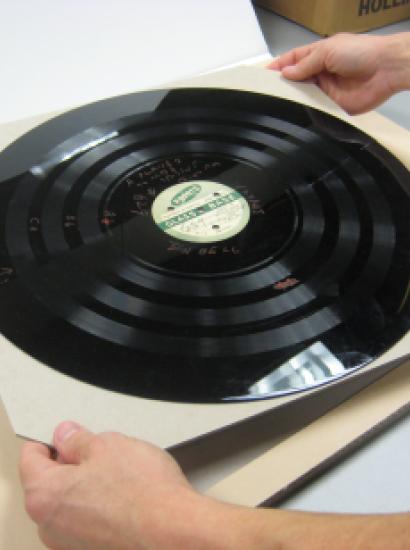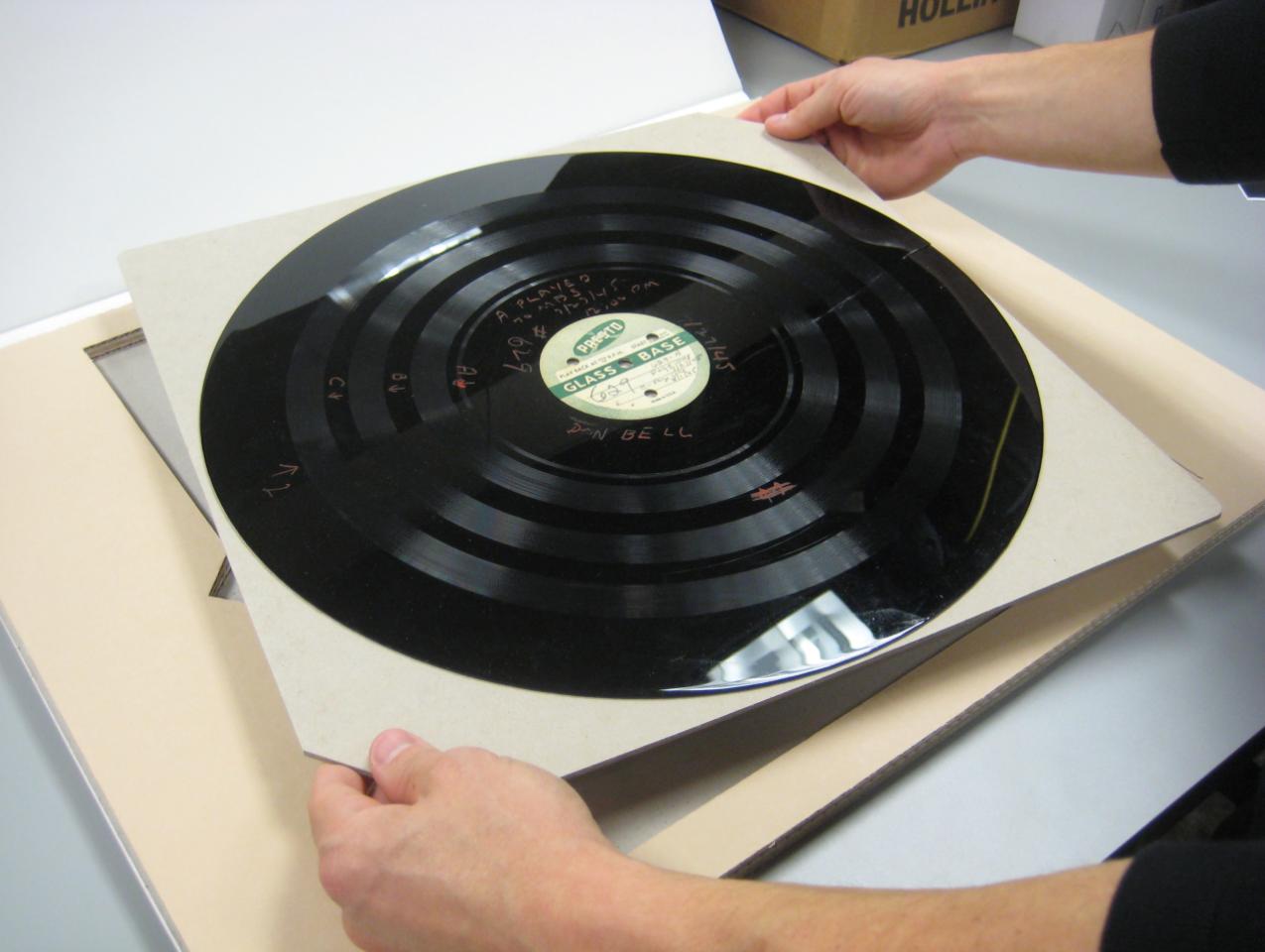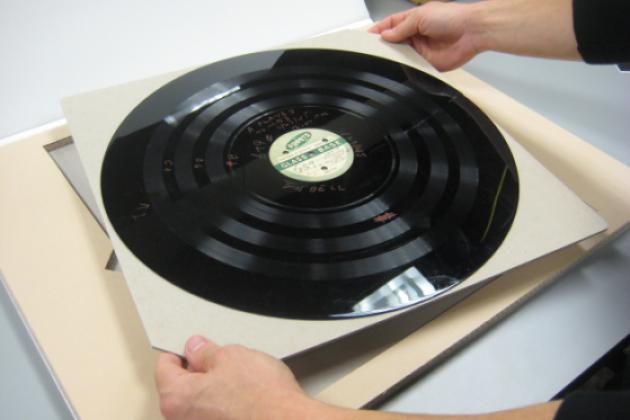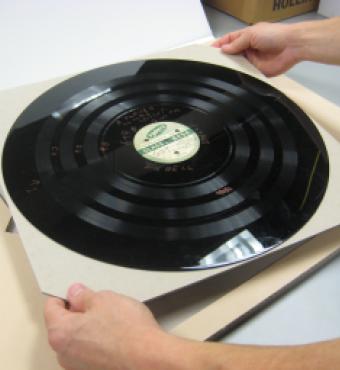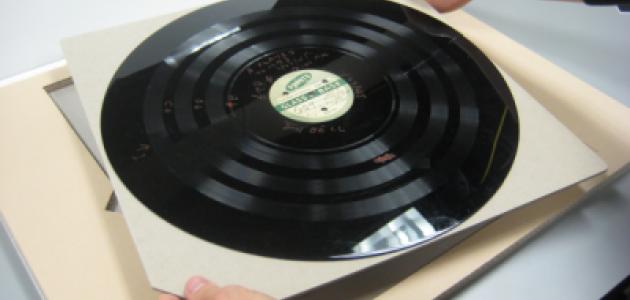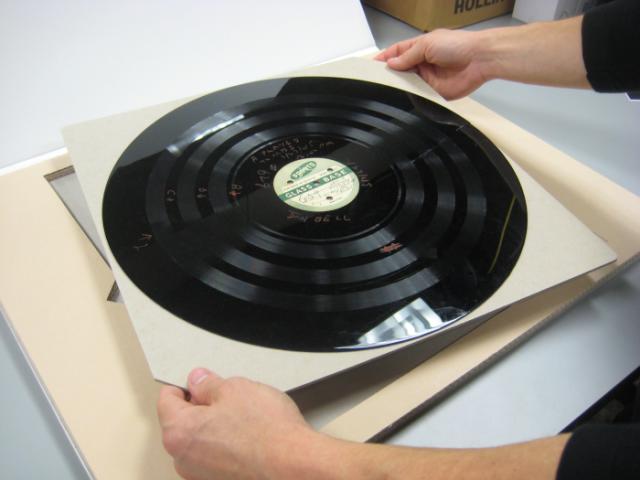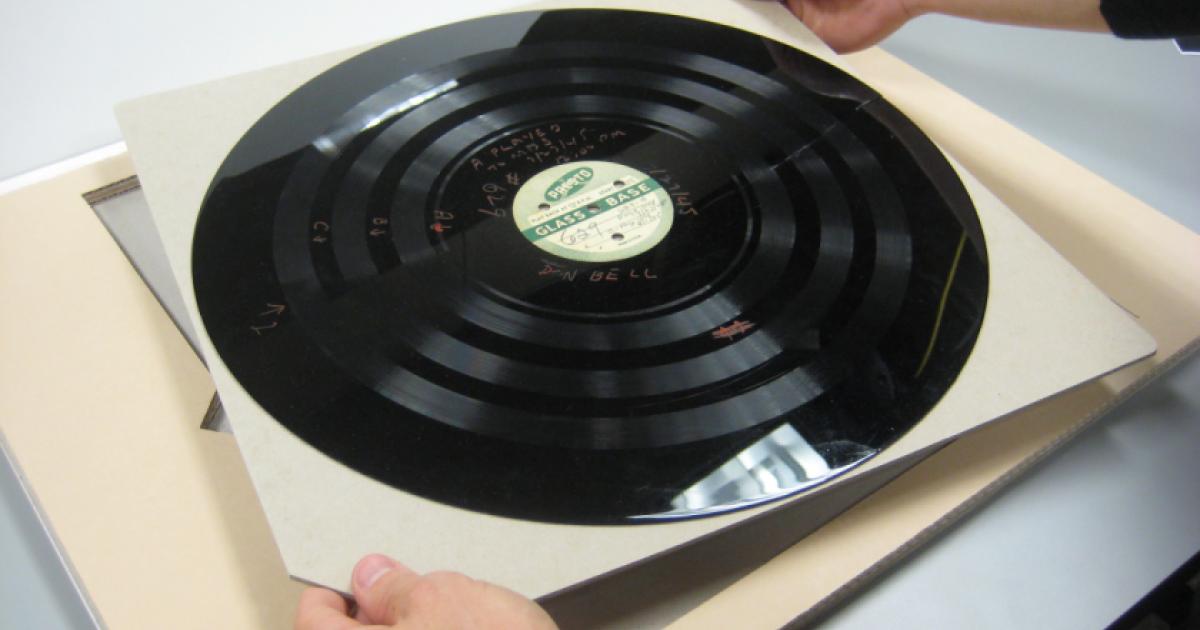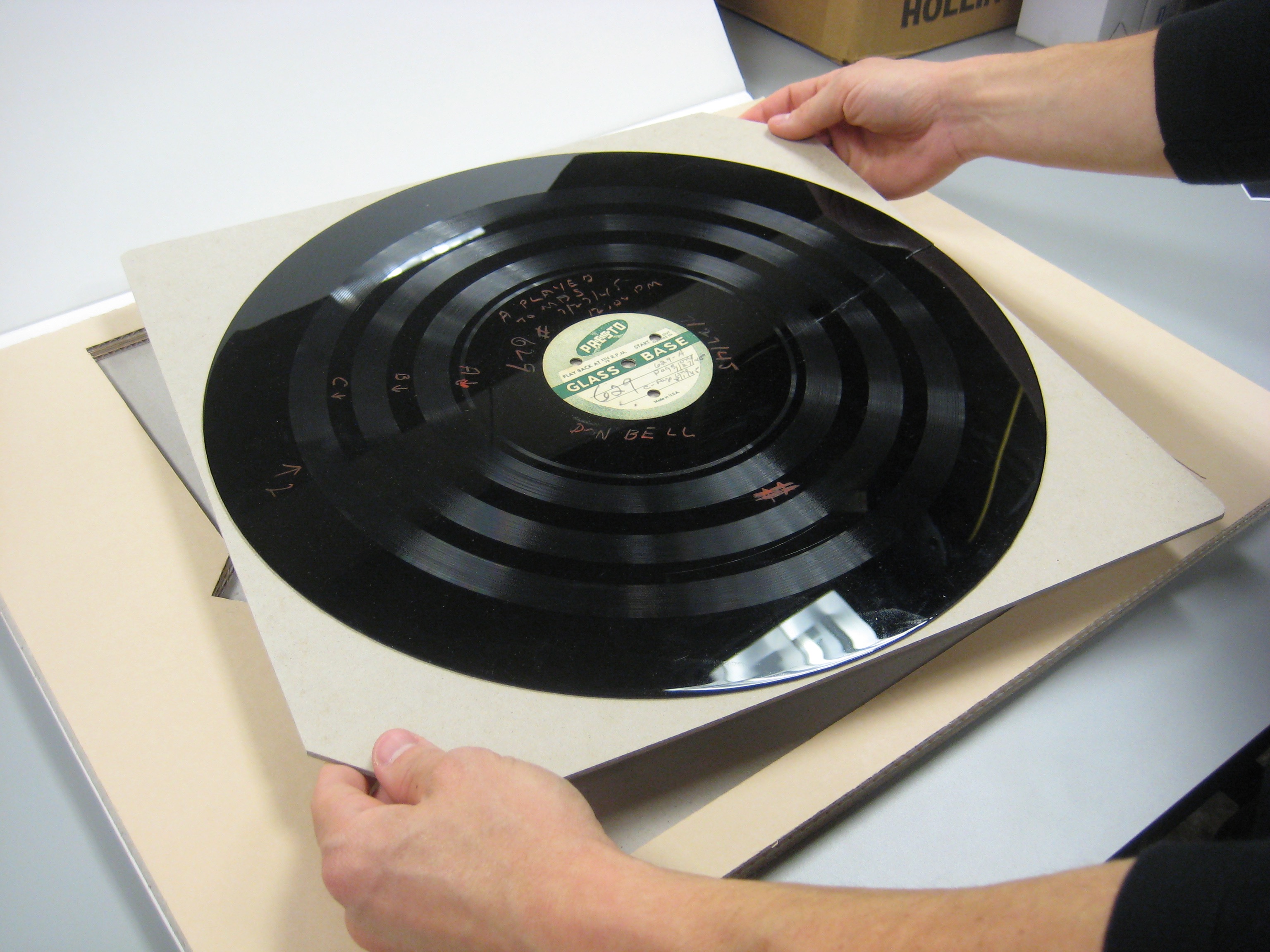
Hoover’s creative solution for the horizontal storage of cracked phonograph discs has recently been featured on the listserv of the Association for Recorded Sound Collections (ARSC), one of the leading professional associations for archivists dedicated to the preservation of audio recordings. Hoover’s housings, designed by archivists Brandon Burke and Rayan Ghazal, are quickly becoming one of the most significant open source solutions to conservation and space considerations among recording sound archives nationwide, and were recently featured in the Journal of the Audio Engineering Society.
The development of the specialized housings for broken, cracked, or delaminating discs began in 2007, as Burke and Ghazal assessed a number of discs in Hoover’s holdings that could not be stored in the preferred vertical orientation. Adapting an existing draft provided by the Conservation Division at the Library of Congress, Burke and Ghazal sought to at once customize and, when possible, employ commercially available elements, such as Hollinger Metal Edge boxes, in an effort to cut down unnecessary spending. After designing and building six prototype variations, the Hoover archivists settled on a model that afforded space-saving stacking and could be made with a modest budget. The housings were then produced in conjunction with fabricators at University of California Bindery in Richmond, CA.
For more information concerning the design and construction of the specialized housings for cracked discs, contact:
Brandon Burke, Associate Archivist for Recorded Sound
brburke@stanford.edu
Rayan Ghazal, Preservation Officer
rayan@stanford.edu
Jim Sam, Digital Migration Analyst
jsam@stanford.edu
You can hear a selection of Hoover audio recordings on our SoundCloud page https://soundcloud.com/hoover-archives and more in the Archives’ reading room.




